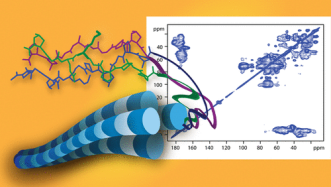Collagen Analysis Service
Collagen is a basic component of the extracellular matrix and the most abundant protein in the animal body, accounting for about 30% of the total protein. It is a glycoprotein, composed of three polypeptide α-chains with Gly-XY repeating residues (Gly stands for glycine, X for proline, Y for hydroxyproline), and is renowned for its triple helix structure. Over 28 types of collagen have been identified, with Type I collagen being the most abundant. Collagen is commonly found in ligaments, tendons, skin, and bone tissues. Its mature, insoluble form provides extraordinary strength, making it essential for the mobility of organisms. Collagen also has biochemical functions that affect cell growth, proliferation, and differentiation.
Collagen can be degraded, converted, and absorbed back into the body, and has become one of the best-selling supplements. It has a wide range of uses in the medical and cosmetic fields.
Applications
1. Dermal filler: Collagen injections can fill shallow depressions on the skin, such as fine lines and wrinkles.
2. Wound dressing: Collagen helps heal wounds by attracting new skin cells to the wound site.
3. Periodontology: Collagen acts as a barrier, preventing fast-growing gingival tissue from developing into dental wounds, to help dental cells to regenerate.
4. Vascular prosthesis: Donor collagen tissue grafts have been used to reconstruct arteries, assist in peripheral nerve regeneration, and produce vascular prostheses.
As a highly versatile material, collagen has been developed for wound care, burn care, orthopedic graft products, tissue engineering, hemostatic sponges, soft tissue augmentation injections, drug delivery carrier, ingredient in skin and hair care products. Depending on the raw material and the processing methods used for collagen, its chemical, physical, biological, immunological, or toxicological properties can change accordingly. Therefore, in the development or manufacturing process of biomaterials containing collagen, it is necessary to analyze collagen using the most appropriate testing methods to determine the characteristics of specific collagen materials and the residues during the production process.

Goldberga, I. et al. Acc Chem Res. 2018.
Figure 1. Collagen Characterization
MtoZ Biolabs offers high-quality collagen analysis services based on multiple platforms, including physical and biochemical analysis and impurity analysis. Our company adheres to regulations and guidelines of NMPA, ICH and EMA. A comprehensive quality system has been established, with data hot/cold/offsite backup, regular equipment calibration/periodic verification, software audit tracking, to provide you with one-stop collagen analysis services.
Services at MtoZ Biolabs
1. Collagen Characterization
(1) Collagen molecular weight
(2) Collagen content/purity (hydroxyproline assay)
(3) Terminal amino acid sequence
(4) Mass spectrometric peptide map
(5) Peptide coverage
(6) Higher-order structure
(7) Amino acid heterogeneity analysis
(8) Total protein content
(9) Moisture content
2. Biochemical Characterization of Collagen
(1) Solubility
(2) Isoelectric point
(3) Osmolarity
(4) SDS-PAGE analysis
(5) Total DNA
(6) Total lipid content
(7) Trypsin resistance
(8) Collagenase resistance
(9) GAGs abundance
(10) Elastin assay
(11) pH levels
3. Physical Characterization of Collagen
(1) Viscosity (mainly soluble samples)
(2) TEM or SEM-electron micrographs
(3) Mechanical testing (e.g., tensile strength)
(4) Optical microscopy
(5) Surface characterization
4. Collagen Impurity Identification
(1) Analysis of heavy metals and trace elements
(2) Additives (cross-linking agents, lubricants, drugs, preservatives)
(3) Processing residues (antibiotics, cleaning agents, etc.)
(4) Host cell contaminants (HCP, HCD)
(5) Glycopeptides
(6) Residual antibiotics
(7) Bacterial endotoxins
How to order?







